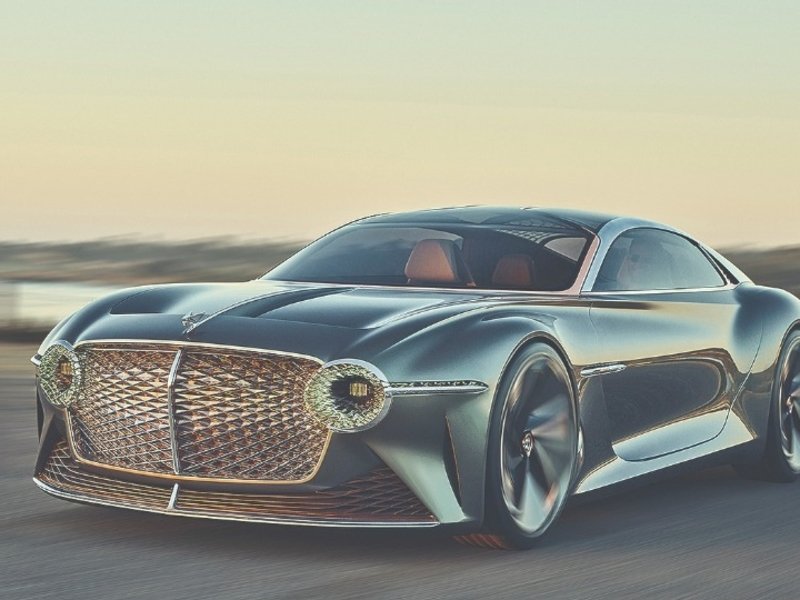
CREWE, England — As Bentley Motors enters the world of electric vehicles, its CEO wants to make sure that any Bentley EV is still a Bentley. And that is going to take time.
The British ultraluxury brand plans to introduce its first EV around 2025, years after the initial wave of EVs from its Volkswagen Group sibling brands Audi, Porsche and VW, not to mention other mass-market and luxury automakers.
But Bentley CEO Adrian Hallmark says that ultraluxury must still be the identity of any Bentley EV. For starters, it means a battery range of at least 300 miles, he said at the company’s headquarters here this month.
That range will be no small feat considering Bentleys have large footprints and are filled with plush and opulent materials, all of which add significant weight. The company’s Continental GT coupe with a W-12 engine has a gross weight of 5,985 pounds. The Bentley Flying Spur sedan weighs 6,614 pounds, and a Bentayga SUV with a W-12 checks in at 7,165 pounds.
“We don’t want to build small cars,” Hallmark said. “We want to build Bentleys. We want to build a Bentley that’s got a credible driving range, because we are the definitive grand tourers,” he said of future battery range needs. “And 100 miles isn’t a grand tourer by anybody’s standards.”
But until the power density of an EV battery increases 30, 40 or 50 percent from current levels, Bentley is limited to the size of a vehicle that reaches the 300-mile threshold, Hallmark said.
“When we say we will launch our first BEV in the middle of the ’20s, it’s because in five years’ time, we anticipate that increasing power density, combined with the increase in the ability to manage the 2,000 individual cells that are in that battery, will allow a 30-plus-percent improvement in performance.”
The automaker is still sorting through its possibilities for EV products. Hallmark clarified that his envisioned 30-plus-percent range improvement would be with existing battery technology. But solid state batteries, which are now being developed for market, could deliver even more range.
Bentley is open to using that technology, said Werner Tietz, the company’s chief of engineering.
“We are embedded in the VW Group, and VW Group is heavily developing battery cells,” Tietz told Automotive News. “But we are also looking at other possibilities because we want to put our first EV on the market in 2025, and therefore we need a steep change in battery technology.
“We also have to look at everything on the market,” he said. “We have to always have our eyes open and look around at the technologies out there.”
Bentley hasn’t indicated the body style or segment that its first EV will occupy. Last year, as part of Bentley’s 100th anniversary, it unveiled the EXP 100 GT concept, a two-door EV.
With a bold design, luxurious interior materials and a length of 228 inches, the EXP 100 GT fit the Bentley brand mold and ethos. Bentley envisioned a 435-mile range for the concept, based on a battery technology that was five times the energy density of current technology.
Bentley has begun rolling out plug-in hybrid variants of its existing nameplates. The Bentayga Hybrid launched in 2019, and the Continental GT and Flying Spur models will be electrified by 2023.
As a point of comparison, Hallmark noted that a Bentley EV would need to be larger than the Jaguar I-Pace. Bentley’s new Bentayga SUV fits that description, but combining a current-generation EV battery system with that model would not deliver a 300-mile range.
“If you took Bentayga now, exactly that aerodynamics, that size of car, you could get quite a big battery to fill the gap between the wheels,” Hallmark said. But “it would have less than 200 miles of range.”
Despite the engineering and technology challenges, Hallmark is confident that Bentley will deliver its first EV as planned.
By 2025 or 2026, he said, “with the known road map for battery power density improvement, we’ll be able to build a proper Bentley,” he said.
“The right wheelbase, the right number of occupants, the right overall length, the right height, the right shape, the right comfort, refinement and quality.”